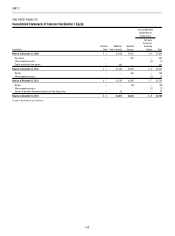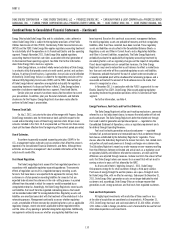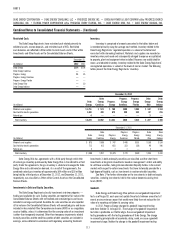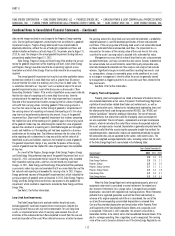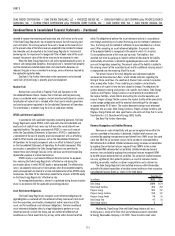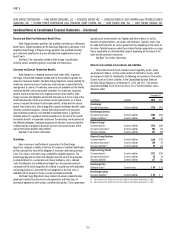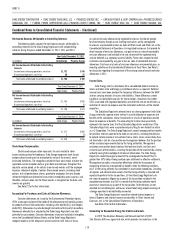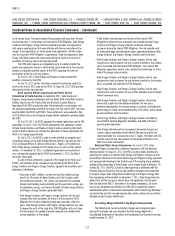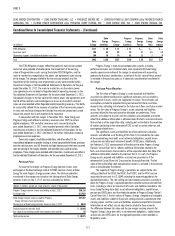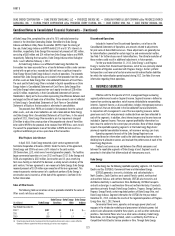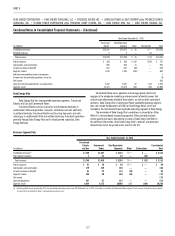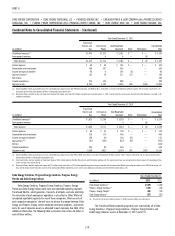Duke Energy 2012 Annual Report Download - page 138
Download and view the complete annual report
Please find page 138 of the 2012 Duke Energy annual report below. You can navigate through the pages in the report by either clicking on the pages listed below, or by using the keyword search tool below to find specific information within the annual report.
118
PART II
Combined Notes to Consolidated Financial Statements – (Continued)
DUKE ENERGY CORPORATION • DUKE ENERGY CAROLINAS, LLC • PROGRESS ENERGY, INC. • CAROLINA POWER & LIGHT COMPANY d/b/a PROGRESS ENERGY
CAROLINAS, INC. • FLORIDA POWER CORPORATION d/b/a PROGRESS ENERY FLORIDA, INC. • DUKE ENERGY OHIO, INC. • DUKE ENERGY INDIANA, INC.
assets measured or disclosed at fair value, transfers between levels in the fair
value hierarchy, and assets and liabilities disclosed but not recorded at fair
value. For the Duke Energy Registrants, the revised fair value measurement
guidance was effective on a prospective basis for interim and annual periods
beginning January 1, 2012. The adoption of this new guidance did not have
a signifi cant impact on the Duke Energy Registrants disclosures or their
consolidated results of operations, cash fl ows, or fi nancial position.
The following new accounting standards were adopted by Duke Energy
during the year ended December 31, 2011, and the impact of such adoption,
if applicable has been presented in the accompanying Consolidated Financial
Statements:
ASC 605 — Revenue Recognition. In October 2009, the FASB
issued new revenue recognition accounting guidance in response to practice
concerns related to the accounting for revenue arrangements with multiple
deliverables. This new accounting guidance primarily applies to all contractual
arrangements in which a vendor will perform multiple revenue generating
activities and addresses the unit of accounting for arrangements involving
multiple deliverables, as well as how arrangement consideration should be
allocated to the separate units of accounting. For the Duke Energy Registrants,
the new accounting guidance was effective January 1, 2011, and applied on a
prospective basis. This new accounting guidance did not have a material impact
to the consolidated results of operations, cash fl ows or fi nancial position of the
Duke Energy Registrants.
ASC 805 — Business Combinations. In November 2010, the FASB
issued new accounting guidance in response to diversity in the interpretation
of pro forma information disclosure requirements for business combinations.
The new accounting guidance requires an entity to present pro forma fi nancial
information as if a business combination occurred at the beginning of the
earliest period presented as well as additional disclosures describing the
nature and amount of material, nonrecurring pro forma adjustments. This new
accounting guidance was effective January 1, 2011, and has been applied to all
business combinations consummated after that date.
ASC 820 — Fair Value Measurements and Disclosures. In
January 2010, the FASB amended existing fair value measurements and
disclosures accounting guidance to clarify certain existing disclosure
requirements and to require a number of additional disclosures, including
amounts and reasons for signifi cant transfers between the three levels of the
fair value hierarchy, and presentation of certain information in the reconciliation
of recurring Level 3 measurements on a gross basis. For the Duke Energy
Registrants, certain portions of this revised accounting guidance were effective
on January 1, 2010, with additional disclosures effective for periods beginning
January 1, 2011. The adoption of this accounting guidance resulted in additional
disclosure in the notes to the consolidated fi nancial statements but did not have
an impact on the Duke Energy Registrants’ consolidated results of operations,
cash fl ows or fi nancial position.
ASC 350 — Intangibles–Goodwill and Other. In September 2011, the
FASB amended existing goodwill impairment testing accounting guidance to
provide an entity testing goodwill for impairment with the option of performing
a qualitative assessment prior to calculating the fair value of a reporting unit
in step one of a goodwill impairment test. Under this revised guidance, a
qualitative assessment would require an evaluation of economic, industry, and
company-specifi c considerations. If an entity determines, on a basis of such
qualitative factors, that the fair value of a reporting unit is more likely than not
less than the carrying value of a reporting unit, the two-step impairment test, as
required under pre-existing applicable accounting guidance, would be required.
Otherwise, no further impairment testing would be required. The revised
goodwill impairment testing accounting guidance is effective for the Duke Energy
Registrants’ annual and interim goodwill impairment tests performed for fi scal
years beginning January 1, 2012, with early adoption of this revised guidance
permitted for annual and interim goodwill impairment tests performed as of a
date before September 15, 2011. Since annual goodwill impairment tests are
performed by Duke Energy as of August 31, the Duke Energy Registrants early
adopted this revised accounting guidance during the third quarter of 2011 and
applied that guidance to their annual goodwill impairment tests for 2011.
The following new accounting standards were adopted by Duke Energy
during the year ended December 31, 2010, and the impact of such adoption,
if applicable has been presented in the accompanying Consolidated Financial
Statements:
ASC 860 — Transfers and Servicing. In June 2009, the FASB issued
revised accounting guidance for transfers and servicing of fi nancial assets and
extinguishment of liabilities, to require additional information about transfers
of fi nancial assets, including securitization transactions, as well as additional
information about an enterprise’s continuing exposure to the risks related
to transferred fi nancial assets. This revised accounting guidance eliminated
the concept of a Qualifying Special Purpose Entity (QSPE) and required those
entities which were not subject to consolidation under previous accounting rules
to now be assessed for consolidation. In addition, this accounting guidance
clarifi ed and amended the derecognition criteria for transfers of fi nancial assets
(including transfers of portions of fi nancial assets) and required additional
disclosures about a transferor’s continuing involvement in transferred fi nancial
assets. For Duke Energy, this revised accounting guidance was effective
prospectively for transfers of fi nancial assets occurring on or after January 1,
2010, and early adoption of this statement was prohibited. Since 2002, Duke
Energy Ohio, Duke Energy Indiana, and Duke Energy Kentucky have sold, on a
revolving basis, nearly all of their accounts receivable and related collections
through CRC, a bankruptcy-remote QSPE. The securitization transaction was
structured to meet the criteria for sale accounting treatment, and, accordingly,
Duke Energy did not consolidate CRC, and the transfers were accounted for
as sales. Effective with adoption of this revised accounting guidance and
ASC 810-Consolidation, as discussed below, the accounting treatment and/
or fi nancial statement presentation of Duke Energy’s accounts receivable
securitization programs was impacted as Duke Energy began consolidating CRC
effective January 1, 2010. Duke Energy Ohio’s and Duke Energy Indiana’s sales
of accounts receivable and related fi nancial statement presentation were not
impacted by the adoption of ASC 860.
ASC 810 — Consolidations. In June 2009, the FASB amended
existing consolidation accounting guidance to eliminate the exemption from
consolidation for QSPEs, and clarifi ed, but did not signifi cantly change, the
criteria for determining whether an entity meets the defi nition of a VIE. This
revised accounting guidance also required an enterprise to qualitatively assess
the determination of the primary benefi ciary of a VIE based on whether that
enterprise has both the power to direct the activities that most signifi cantly
impact the economic performance of a VIE and the obligation to absorb losses
or the right to receive benefi ts of a VIE that could potentially be signifi cant to a
VIE. In addition, this revised accounting guidance modifi ed existing accounting
guidance to require an ongoing evaluation of a VIE’s primary benefi ciary and
amended the types of events that trigger a reassessment of whether an entity
is a VIE. Furthermore, this accounting guidance required enterprises to provide
additional disclosures about their involvement with VIEs and any signifi cant
changes in their risk exposure due to that involvement.
For the Duke Energy Registrants, this accounting guidance was effective
beginning on January 1, 2010, and is applicable to all entities in which Duke


